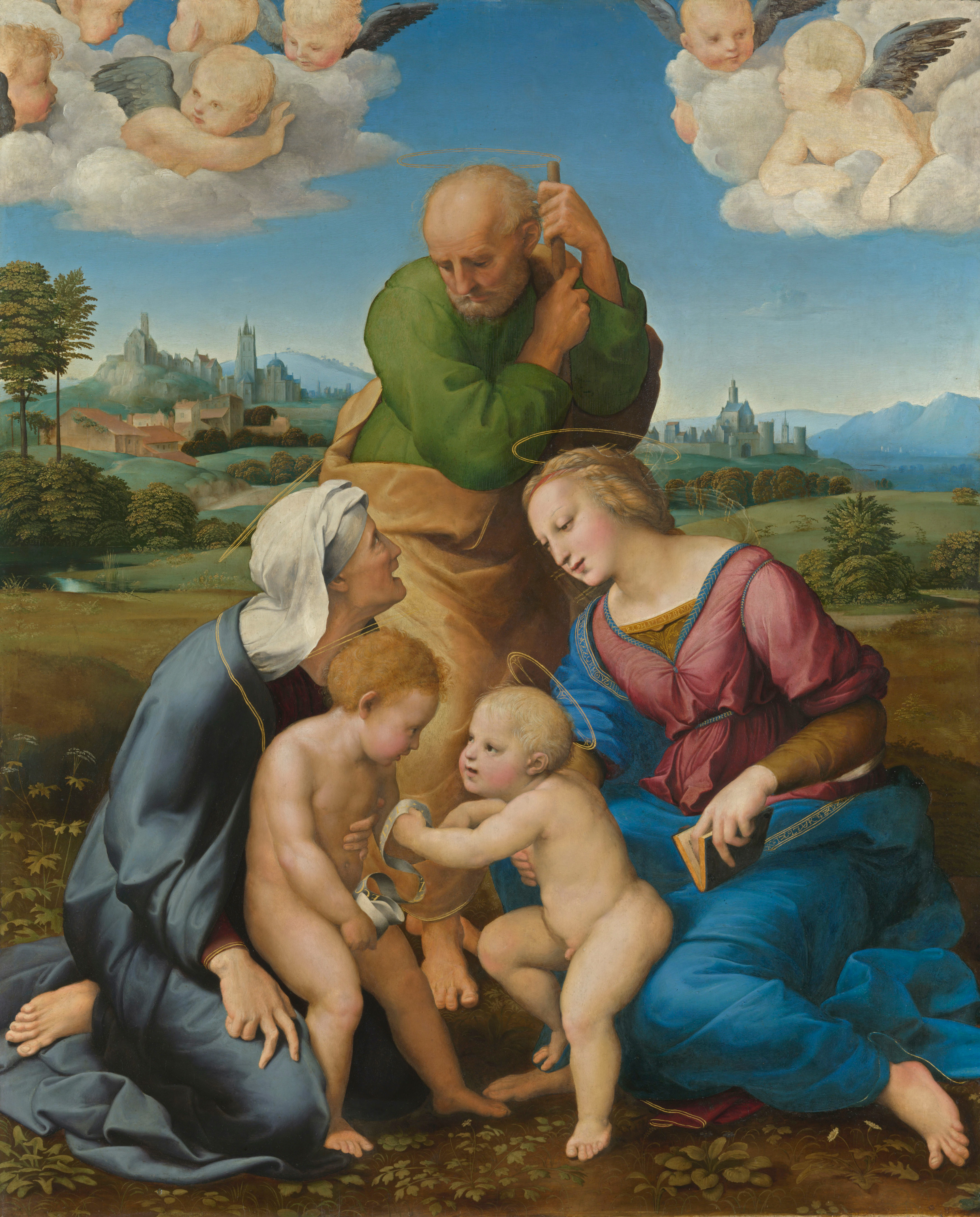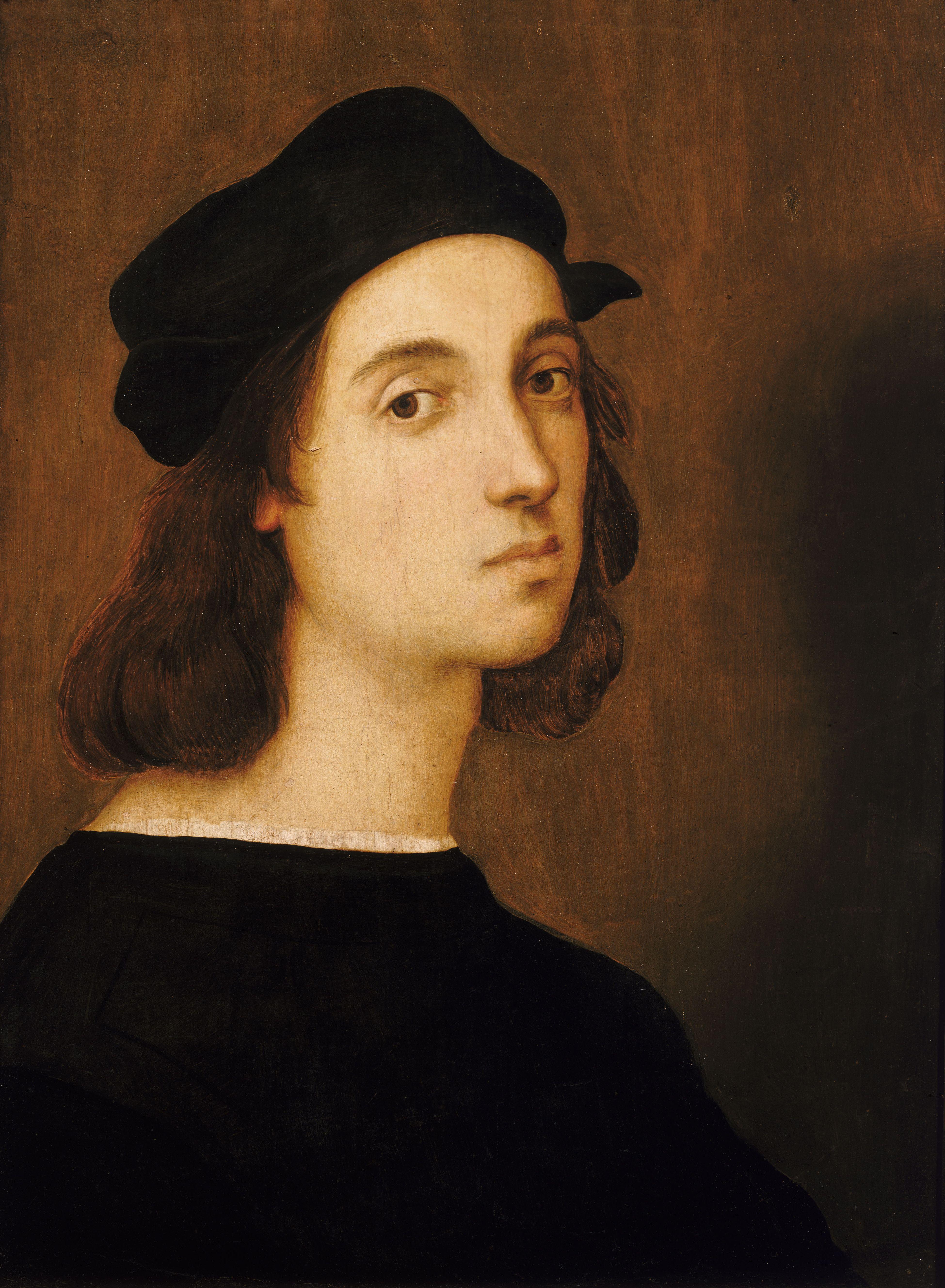We continue our special month with the Alte Pinakothek in Munich with this beautiful Raphael. Enjoy!
With this devotional painting in large format, the young Raphael competed with Leonardo and Michelangelo in Florence at the beginning of the 16th century. The figures of the Holy Family are arranged in a strict pyramidal composition. The familial is revealed on the inside: in the visual lines and referential alignments that develop between the figures and tighten the composition. The precise observation of human behavior makes the picture appear natural despite the apparent austerity.
The Italian masters of the Renaissance present the saints of their devotional pictures in front of wide landscapes with city views. In doing so, they follow the example of Old Dutch painting, which attracted a great deal of attention, especially in Florence. Thus Raphael also quotes the architecture north of the Alps, which incidentally serves the purpose of locating the events depicted in a foreign country.
St. Joseph, standing in the center of the picture, completes the harmonious composition of figures in its pyramidal structure. Through his dialogue with Saint Elizabeth, he is prominently integrated into the complex emotional interweaving of the protagonists. Apparently, Raphael was inspired by Leonardo's and Michelangelo's paintings regarding this pictorial composition. In particular, the similarity to Michelangelo's depiction of the Holy Family in the Doni Tondo is obvious.
Raphael signed his painting created in Florence at the neckline of the garment of the Mother of God with the note "RAPHAEL . VRBINAS." The pupil of the Umbrian master Perugino, who came from Urbino in the Marches, self-confidently documented that he is not a Florentine painter. He worked in the Tuscan art center for only four years, from 1504 to 1508, before continuing his great career in Rome. The Florentine merchant Domenico Canigiani probably ordered the painting on the occasion of his wedding. It later became the property of the Medici family.
There is no mention in the Bible of a meeting between Christ and John the Baptist when they were boys. The numerous depictions of this encounter go back to accounts of the life of John, who is venerated as the patron saint of the city in Florence. The infant Jesus grasps the scroll with John's prophecy: "Behold, this is the Lamb of God."
A restoration completed in 1983 uncovered the two groups of angels at the top of the picture. They had been completely painted over in the 18th century when the painting was in the collection of the Düsseldorf Elector Johann Wilhelm von Pfalz-Neuburg.
P.S. Click here to learn why Raphael became one of the most important painters in art history!
P.P.S. If you're looking for more Renaissance, please check our beautiful 2022 paper calendars here which are now ON SALE. :)


 Raphael Santi
Raphael Santi